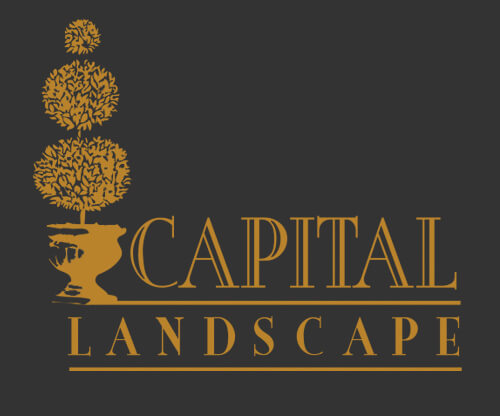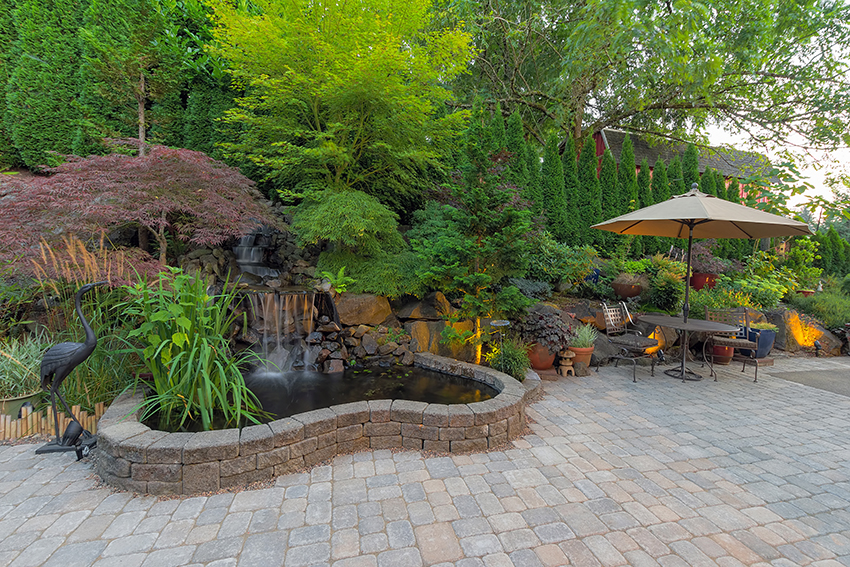Paver stones are a popular form of hardscape. They give your landscape a considerable amount of character, and add to the look of your landscape without requiring extra maintenance or care.
But before you select paver stones, you need to make sure you’re choosing one that’s right for your needs. In many cases, you and your landscaper will try to figure out which design matches the rest of your outdoor décor, but before you consider the paving options, you may want to learn the benefits and weaknesses of each type of stone.
Types of Pavers
There are many different types of paving options to choose from. The most common include:
- Cobble Stone
- Brick
- Concrete
- Stamped Concrete
- Gravel
Below, we’ll explore the pros and cons of each option. Keep in mind that all of these have a different look, so in some cases the decision will be based on the design itself and not necessarily the pros and cons of the paver option. Nevertheless, there are some issues that you’ll want to consider. If you’re in the Sacramento, Roseville, Folsom, El Dorado Hills, Elk Grove, Rancho Cordova, or Auburn areas, call Capital Landscape today at (916)783-5080 and we’ll work with you to figure out the best option.
Cobble Stone Pavers
- Benefits
Cobble Stone is a classic option that gives your landscape not only a “vintage” feel, but also tends to look natural in nearly any landscape design. Often when we pave cobble stones in the Sacramento area, we added it to homes that have a lot of green, and landscapes that are designed to look almost European.
Cobblestone needs very little maintenance after it has been installed. They last great in any type of winter, although the Sacramento winters do not generally get cold enough to damage most forms of pavement.
- Weaknesses
Cobble stone pavers tend to cost more to install because they need to be placed into the ground by hand (they do not come in uniform shapes and sizes so machine laying is difficult). Part of their appeal is also one of their drawbacks – the space in between the cobble stone can grow grass and weeds. Many like this look because it makes the cobblestone appear a part of the overall landscape, but for others the grass and dirt that may come up in between the stone can be a distraction.
Brick
- Benefits
Bricks are a simple option that takes almost no maintenance. If anything happens to the brick, you can simply take the brick out and replace it with a new brick and it won’t affect the appearance. Though the cost is still a bit higher than most people expect for a simple paver like brick, the simple maintenance and classic style are appealing to many homeowners.
- Weaknesses
The primary weakness of brick paving is color. The color of brick will not work with every landscape. This is a situation where you may want to consult with your landscape architect to make sure that it will work with both your home and your overall landscape. When brick works, it works very well, but it can sometimes clash with the rest of the property.
Concrete
- Benefits
Concrete paving is one of the most popular hardscape choices overall, because – in many ways – it’s not a single choice. There are so many different colors and styles of concrete paving that you essentially have unlimited options at your fingertips, able to match any décor you’re looking for.
They also cost much less to install than other forms of hardscape, and maintenance is equally as low as other hardscape options. For all of these reasons, concrete is often considered one of the best options available.
- Weaknesses
In a broader sense, concrete doesn’t have many weaknesses compared to other types of hardscape. However, concrete colors can potentially fade – especially in the harsh Sacramento sun – and the surfaces of concrete can erode with enough weathering. Often this takes years or decades, but replacement isn’t quite simple as it is with, say, brick, so the breakdown of the concrete can be a bit of a concern
Stamped Concrete
- Benefits
Stamped concrete doesn’t technically involve paver stones, but it looks like it is and can mimic nearly every shape, design, and color. For the homeowner, this provides a lot of different options that are perfect for any type of landscape, and opens the door to some incredibly fantastic designs even if no paver stone exists for it.
- Weaknesses
Any time you pave over an entire landscape there is a risk of cracking, and that’s what we see with stamped concrete. Maintenance is pretty rare, but when something does cracked it often requires a trained stamped concrete company to fix it, and is not easy to fix by hand. Like all forms of concrete, color can fade over time.
Gravel
- Benefits
Low cost and extremely easy to install, gravel is a popular budget choice for homeowners that want to add to their landscape. Because gravel looks rustic, it’s great for rustic homes, as well as xeriscaped homes, and it withstands the elements much better than other hardscape options.
- Weaknesses
Gravel requires a lot of upkeep. The stones are not held in place, so they can spread out and bleed into the rest of your turf. They’re not particularly attractive in all types of landscape (although they look great in some) and they are painful to walk on and sometimes troubling to drive over.
Choosing the Hardscape that is Right for You
The reality is there is no right or wrong answer to which paver solution you should use. While every type has their drawbacks, the most important thing is that you love your landscape, and if you love gravel, love stamped concrete, or want your landscape to look a certain way, as long as your home showcases your vision, the drawbacks of any type of landscape pavement installation are not going to matter.
If you’re interested in learning more about paver stone installation in the Greater Sacramento area, contact us today at (916)783-5080.



